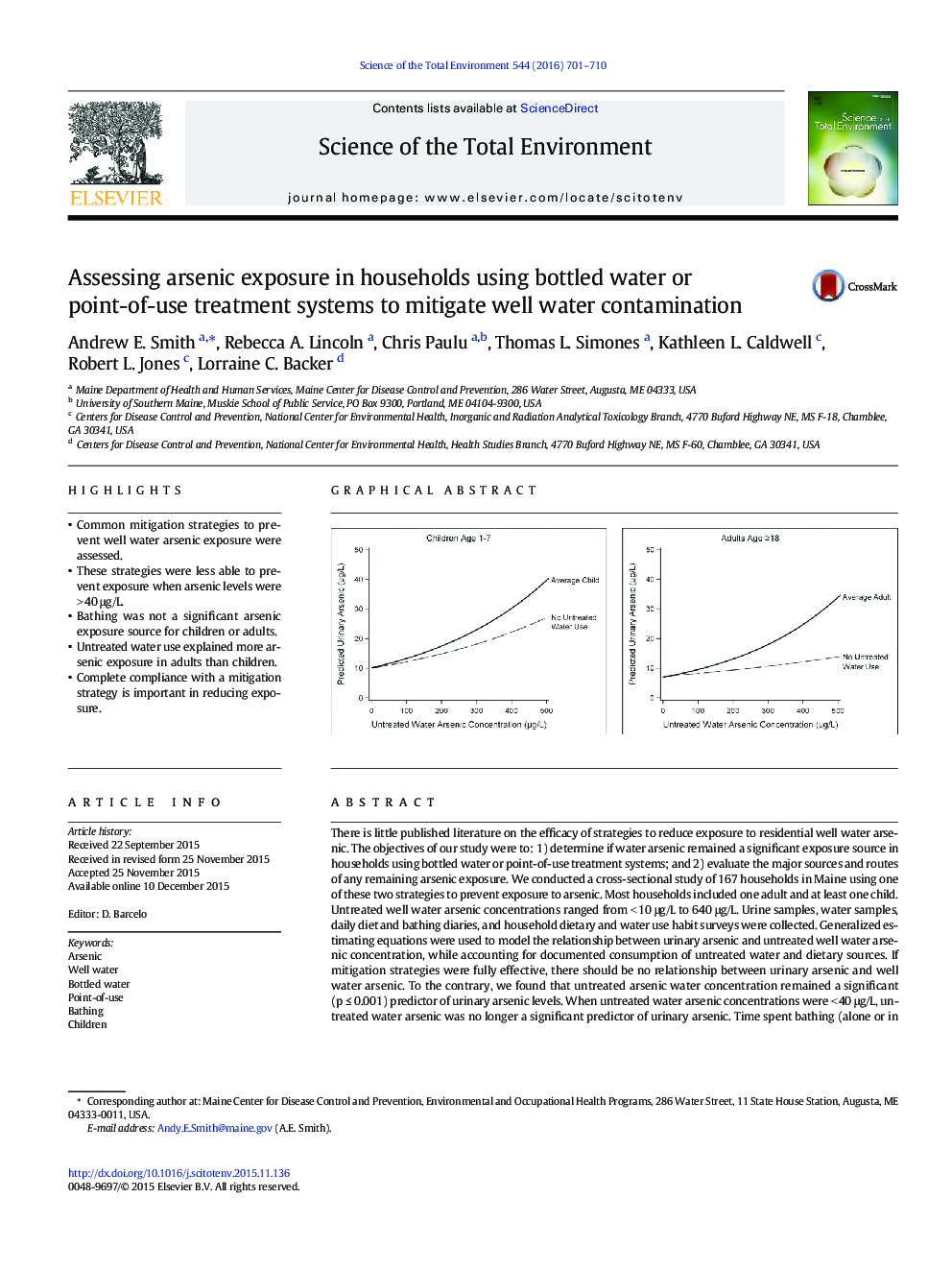| کد مقاله | کد نشریه | سال انتشار | مقاله انگلیسی | نسخه تمام متن |
|---|---|---|---|---|
| 6323704 | 1619738 | 2016 | 10 صفحه PDF | دانلود رایگان |
- Common mitigation strategies to prevent well water arsenic exposure were assessed.
- These strategies were less able to prevent exposure when arsenic levels were > 40 μg/L.
- Bathing was not a significant arsenic exposure source for children or adults.
- Untreated water use explained more arsenic exposure in adults than children.
- Complete compliance with a mitigation strategy is important in reducing exposure.
There is little published literature on the efficacy of strategies to reduce exposure to residential well water arsenic. The objectives of our study were to: 1) determine if water arsenic remained a significant exposure source in households using bottled water or point-of-use treatment systems; and 2) evaluate the major sources and routes of any remaining arsenic exposure. We conducted a cross-sectional study of 167 households in Maine using one of these two strategies to prevent exposure to arsenic. Most households included one adult and at least one child. Untreated well water arsenic concentrations ranged from < 10 μg/L to 640 μg/L. Urine samples, water samples, daily diet and bathing diaries, and household dietary and water use habit surveys were collected. Generalized estimating equations were used to model the relationship between urinary arsenic and untreated well water arsenic concentration, while accounting for documented consumption of untreated water and dietary sources. If mitigation strategies were fully effective, there should be no relationship between urinary arsenic and well water arsenic. To the contrary, we found that untreated arsenic water concentration remained a significant (p â¤Â 0.001) predictor of urinary arsenic levels. When untreated water arsenic concentrations were < 40 μg/L, untreated water arsenic was no longer a significant predictor of urinary arsenic. Time spent bathing (alone or in combination with water arsenic concentration) was not associated with urinary arsenic. A predictive analysis of the average study participant suggested that when untreated water arsenic ranged from 100 to 500 μg/L, elimination of any untreated water use would result in an 8%-32% reduction in urinary arsenic for young children, and a 14%-59% reduction for adults. These results demonstrate the importance of complying with a point-of-use or bottled water exposure reduction strategy. However, there remained unexplained, water-related routes of exposure.
Journal: Science of The Total Environment - Volume 544, 15 February 2016, Pages 701-710
